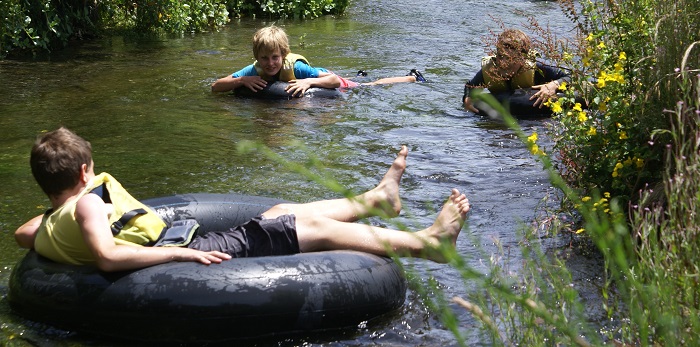Knowing our river
Knowing our local river is a learning intention from the Water Safety and Awareness classroom module in kura and primary schools. This activity helps students understand about the river in their local environment which they may recreate around or swim in. In addition, students learn about the significance of their river for Māori, who is in charge of the river, how to describe the river and how it may have changed over time.
This is a learning lesson for kaiako and teachers helping tamariki know more about their local river.

Learning Intention
Students learn to:
- Investigate and enquire about their local river (water environment)
- Describe their local river, understand its significance to Maori, who is in charge of the river and how it may have changed over time.
- know its Māori name and meaning
Success Criteria
Students are able to:
- Work within groups to talk and write about their local river.
- Contribute to the group discussion
- Share stories, material and experiences about how they researched about their local river
Resources
Maps of the local environment, brochures and web links about the local river. Information sources:
- Regional and local council,
- Marae/Runanga
- Government and local agencies including Dept of Conversation, Harbourmaster, Visitors Information Centre, Policy, libraries
- Commercial and community groups including rafting, fishing, kayaking and waka ama
Lesson Sequence
This research activity has students investigate their local river. The activity is planned as a group activity where different groups investigate different aspects of your local river and develop a collective understanding of the river.
This could be a large research task and can be used to meet Social Studies /Social Science objectives.
The tasks are different in their complexity and approach. You may wish to complete some preliminary work identifying sources of information for the students.
The work will be enhanced if
- an EOTC visit to the river is included
- local expertise is used in the classroom or on the EOTC visit
- digital photographs of significant features and aquatic activities occuring in, on or around the river are included.
A copy of a research task for each group.
- Divide the class into the appropriate number of groups.
- Give each group a Research topic to complete or you and the class could develop specific research tasks that relate to your local river.
- Have students conduct the research, and then present their findings
Research topics
What is the significance of our river for Maori?
Find out all you can about the Maori view of the river. Identify:
- the Māori name of the river. What is it’s meaning?
- any stories and/or songs about the river that Māori have.
- what are the most important things about the river for Māori.
- any Māori features that are present along the river.
- how the river has been used over time by Māori, e.g. catching fish, tuna, transport route, etc.
- any concerns that Māori might have about the river.
Who is in charge of our river?
Find out which groups and organisations have a say in the way people behave when they are using the river.
Some examples to think about are:
- environmental protection
- removal of water from the river
- Kaitiaki (guardians of the river)
- safety of users
- vehicles on or near the river
- rescues
- floods
- commercial operators
- constructions across or in the river
- groups using the river for recreation
For each group that you identify, work out
- what they do?
- whether or not you think they do a good job, why or why not?
Describing Our River
Gather information that will provide a good description of the river. Here are some ideas.
- Where does the river fl ow from and to?
- How long is the river?
- What important geographical features are there alongside the river?
- What are the common activities that take place on or in the river, and where do they occur?
- What features of the river can you identify? You may want to make a map of the river or a section of the river that shows all the key features. You could use digital photographs to show the features.
- Identify where some specific aquatic activities take place and any areas where it is too dangerous for any aquatic activities or specific aquatic activities.
- Describe the river’s normal flow, and what happens after heavy rain or a flood.
How has our river changed?
Find out whether the river has changed its course or character over time.
- Talk to elders and whanau to hear stories about the river when they were young. Listen to their stories about the river,
- Look at the river now and identify what the major changes have been.
Check for
- major changes in the course of the river
- changes in size, flow, and speed of flow
- changes in water quality
- changes in the geographical or modified features surrounding the river.
Try to find out what caused the changes.
Using the information you have gathered, predict how you think the river will look when tamariki are adults and grandparents.

